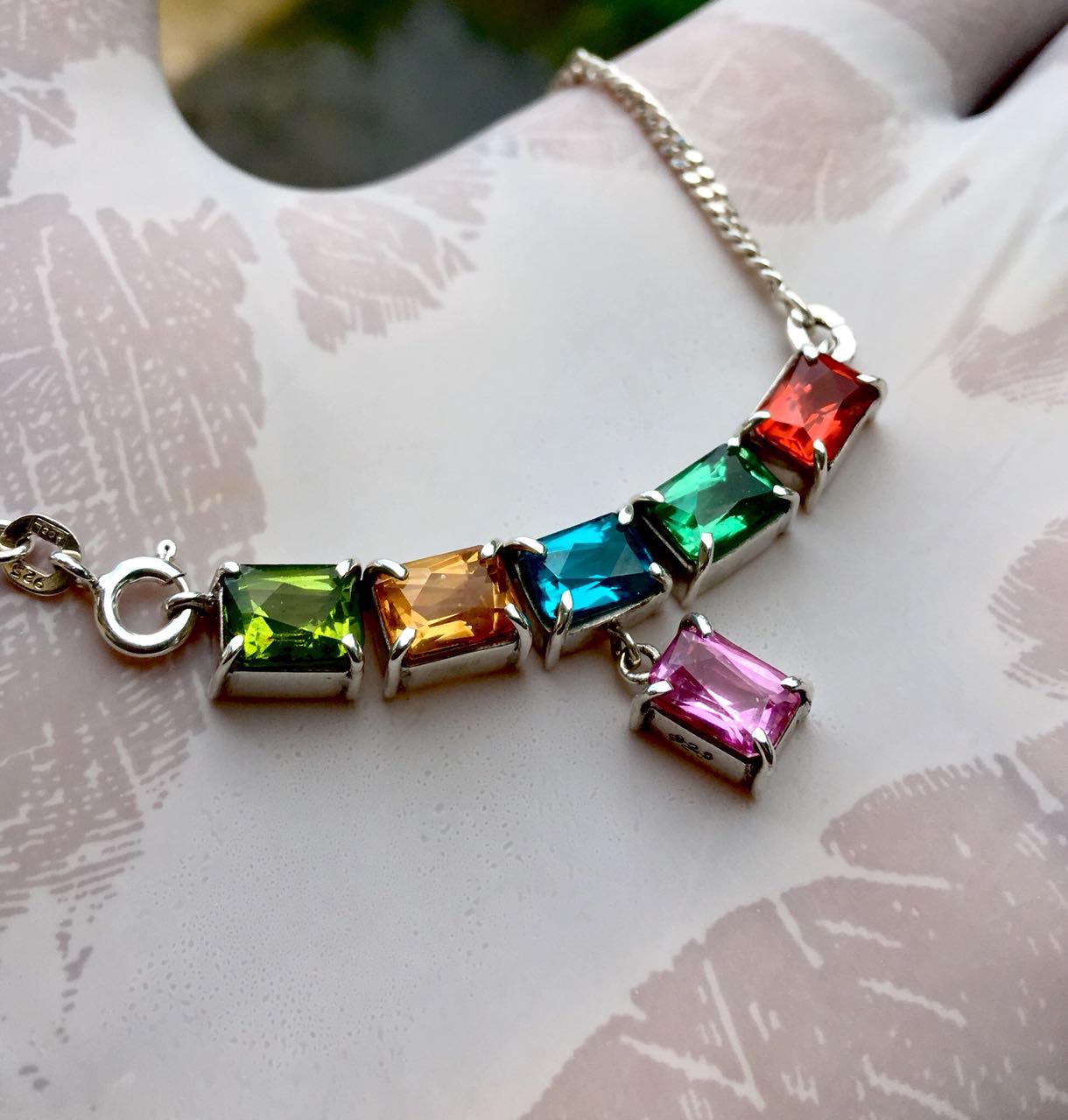Center-Fused Color Treated Gemstones
Center-fused color treated gems are assembled from natural rough. Learn how the procedure works and how to identify this stable color enhancement.
2 Minute Read
Center-Fused Color Treatment
This process has two steps. First, a layer of diffusion treatment color is applied to a piece of colorless rough. Next, a second piece is fused to the colored piece using a high pressure and high temperature (HPHT) process. This leaves the color layer on what will become the stone's girdle plane.
The end result is a single stone with extraordinary color. Unlike a surface treated gem, the color won't scratch off, and neither chemicals nor the heat of a torch will affect it.
How Do You Classify Center-Fused Color Treated Gems?
Many people have asked about how to classify a center-fused color-treated gemstone. While this treatment involves multiple techniques, the results are simply classified as assembled stones.
Identifying a Center-Fused Color Treated Gem
The most notable feature of these gems is their color. Without knowing their source, you could confuse blue-green material with paraíba tourmaline and red and orange with fire opals, etc. However, a standard examination — refractive index, optic sign, and specific gravity readings — will quickly tell you the material is either quartz or topaz. But there's more to these stones than that.
Identification by inclusions poses some difficulties. These gems consist of natural gem materials. Center-fused color treated gems are cut from very clean rough but still show natural inclusions under a microscope.
You can best identify these gems with a 10X loupe. Under this magnification, the most visible feature is what, at first, looks like a fingerprint inclusion. You'll see this best under the girdle. (It's difficult to see from the crown). It's actually just visible where light is striking it. If you move the gem in relationship to the light source, the fingerprint will move as well. It will always stay parallel to the girdle plane. Under higher magnification, you can tell this "fingerprint" is actually a series of small bubbles in a plane under the color layer. Although the bubbles might lead you to think the gem is synthetic, this assembled stone consists of natural gem materials.
You'll find the final identifying feature on the girdle. The color line is distinct even in air. You don't even need an immersion test, which you would need to identify a glued doublet. The color line also has significant thickness, about 0.1 mm.
The combination of natural inclusions, the movable "fingerprint," and the distinct color line will help you easily distinguish a center-fused color treated gem from a glued doublet.
Conclusion
Sithy Gems and Lapidary should be complimented for their ingenuity. They created a stable method of color enhancement that rivals the brightest diffusion treated gems. In addition, they pride themselves on fine cutting, so these gems have all the brilliance and scintillation one would expect from high-end gemstones. Overall, these are very fine looking gems. Considering their reasonable price, you can expect them to find wide acceptance in the market.
"Alexandrite-Topaz" center-fused colored treated gems. © Sithy Gems and Lapidary. Used with permission.
Donald Clark, CSM IMG
Donald Clark, CSM founded the International Gem Society in 1998. Donald started in the gem and jewelry industry in 1976. He received his formal gemology training from the Gemological Institute of America (GIA) and the American Society of Gemcutters (ASG). The letters “CSM” after his name stood for Certified Supreme Master Gemcutter, a designation of Wykoff’s ASG which has often been referred to as the doctorate of gem cutting. The American Society of Gemcutters only had 54 people reach this level. Along with dozens of articles for leading trade magazines, Donald authored the book “Modern Faceting, the Easy Way.”
Related Articles
Corundum Treatments
Turquoise Treatments and Synthetics Guide
Emerald Enhancements: A Consumer and Trade Guide
How Can Gem Buyers Protect Themselves from Fraud?
Latest Articles
800 Years of Mogok: A Celebration in Tenuous Times
What is the Average Gemstone Faceting Yield?
Pyroxmangite Value, Price, and Jewelry Information
How to Identify Emerald Simulants and Synthetics
Never Stop Learning
When you join the IGS community, you get trusted diamond & gemstone information when you need it.
Get Gemology Insights
Get started with the International Gem Society’s free guide to gemstone identification. Join our weekly newsletter & get a free copy of the Gem ID Checklist!
